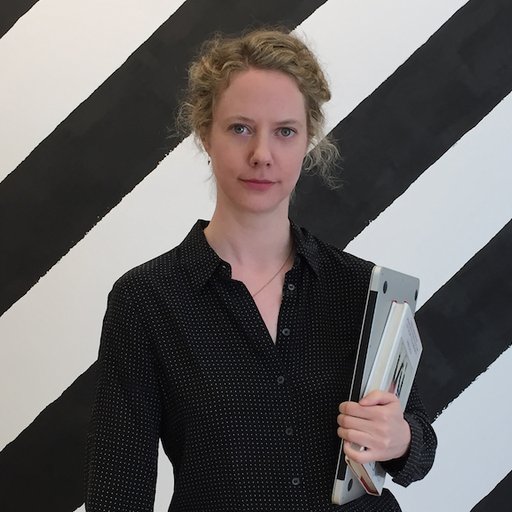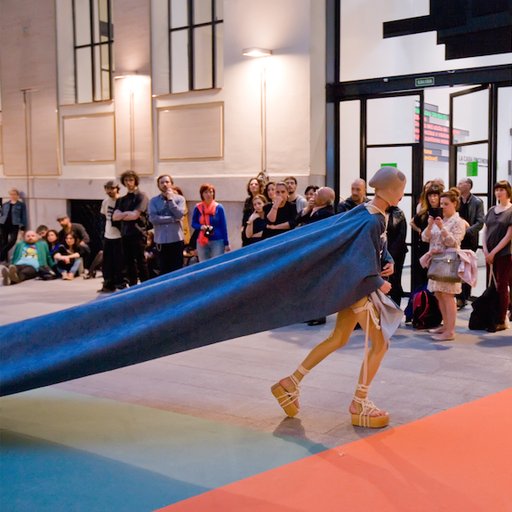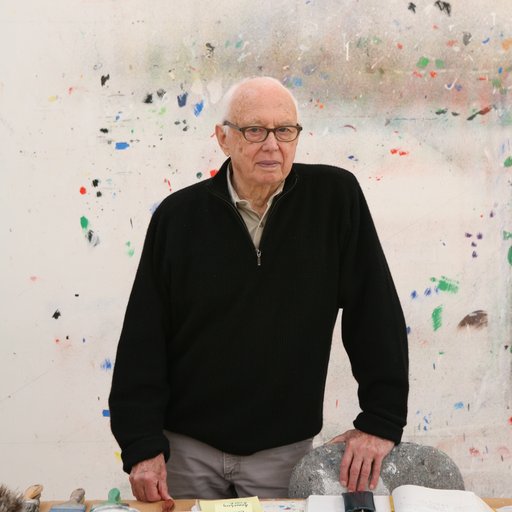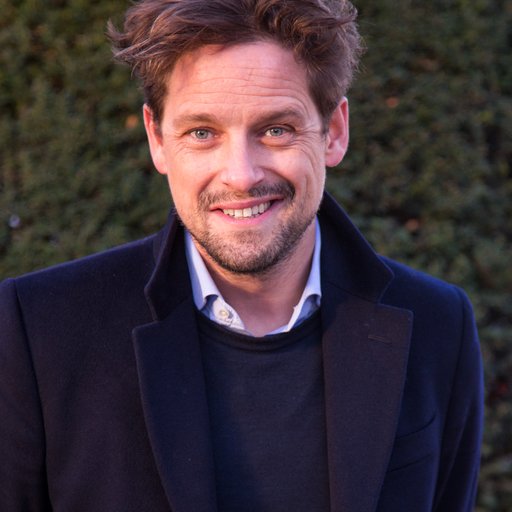As the commissioned artist for the 2016 Armory Show , Kapwani Kiwanga is importing a multifaceted, transglobal, and genuinely far-out perspective to the Piers this month. But while she stands as the centerpiece of this year’s “Focus: Africa ” presentation, Kiwanga herself represents a more complex diaspora narrative than the geographic specificity of the Armory Show might suggest. Born to Tanzanian parents in Ontario, Kiwanga currently lives in Paris—an international background that befits her multicultural approach to art making.
With degrees in anthropology and comparative religion, Kiwanga brings a research-fueled rigor to her expansive projects, although they often owe as much to science fiction and popular culture as they do the archive. She is perhaps best known, for instance, for her three-part performance-lecture Afrogalactica , in which she assumes the role of an anthropologist from Africa’s future, and her ongoing “Flowers for Africa” series modeled after floral arrangements from postcolonial independence ceremonies.
Like the rest of her work, Kiwanga’s new Armory commission—an investigation of the diplomatic gifts received by 1950s United Nations Secretary General Dag Hammarskjöld—favors historical interpretation over speculation. Here, she speaks to Artspace’s Dylan Kerr about her novel approach to African history, past, present, and future.
What can you tell me about your Armory Show commission?
The starting point for the commission was an interest in diplomatic gifts. I visited the U.N. Headquarters when I was last in New York, and I was curious about how different countries give gifts to the U.N. for special occasions or to commemorate their entry into the U.N. That line of inquiry opened up into a larger question about gifting more generally.
How did you settle on the story of Dag Hammarskjöld for your project?
I had been looking into diplomatic gifts, and I had come across an image of one of the U.N. secretary-general’s suites. It was really quite a banal office space, but some of the things hanging on the walls were gifts, according to the photo’s description. There’s a gift from northern Nigeria, another from India, and they ignited different connections that I was trying to make between history and the political relationships that were happening at that time. Gifting within the diplomatic sphere is a way of moving forward or repairing relations, but gifts also create relationships and connections between different communities in everyday life as well.
From there, I became interested in Hammarskjöld, who was Secretary-General of the U.N. from 1953 to 1961, when he passed away in a plane crash during a diplomatic mission. There’s conspiracy theories around his death, but that’s not what interests me the most—it’s more about using him as an entry point to look at some of the things that were happening at that time. The installation jumps around temporally as well, looking at the ‘60s, the current moment, and also prehistory.
The Sun Ra Repatriation Project
, 2009 (Extract)
from
Kapwani Kiwanga
on
Vimeo
.
You studied anthropology, and your artworks often employ the methodology of the social sciences. When did you first start to use this approach in your art?
It was probably with my first real artwork, in 2009, which was a video and installation called The Sun Ra Repatriation Project . The project centered on Sun Ra as a person and his personal mythology of being an extraterrestrial from Saturn. I was trying to create a kind of contemporary ritual where I was going to repatriate him home—to Saturn, of course.
I created a method that would allow that to happen by combining techniques from different worlds—from astronomy and astrophysics to jazz and popular African-American culture. I was hanging out with people from a jet propulsion lab, but also people who had jammed with Sun Ra, and I was trying to have a dialog between those realms. The worlds may seem disparate, but they were speaking about similar things when it came to Sun Ra, just using different languages.
The fact that I put myself into that first work—in terms of taking on the role of a researcher, instigating the quest—also became important for other works, like my performances. It’s about using myself as a vector to this moment of research.
Some of your projects have been labeled as “Afrofuturist,” a designation that seems to be coming back into vogue as the African art market continues to expand. How do you think about this term when it comes to your work?
I wouldn’t say that my work is Afrofuturist per se, but I think it’s an interesting concept, and I understand it more as a way of looking at different temporalities—interweaving and overlapping past, present, and future—which I’m always exploring in my work anyway. It was important to me in terms of discovering Sun Ra and thinking about personal mythologies—those were the things that interested me, and they just so happened to fall under the umbrella term of “Afrofuturism."
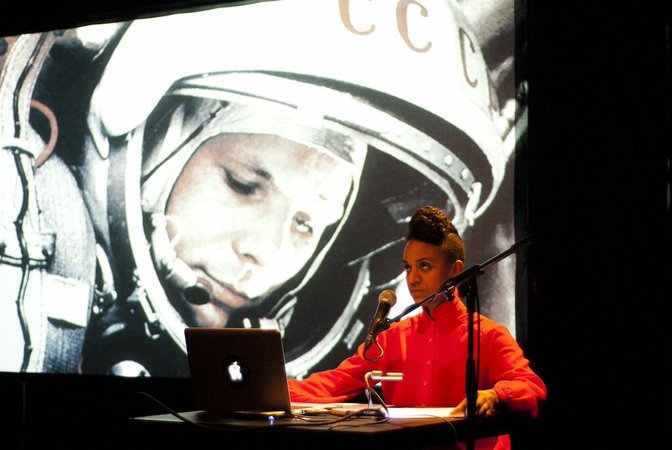 Photo of Kiwanga performing
AFROGALACTICA: A breif history of the future
(2012-ongoing). Image courtesy of the artist.
Photo of Kiwanga performing
AFROGALACTICA: A breif history of the future
(2012-ongoing). Image courtesy of the artist.
How does your more recent series “Flowers for Africa,” in which you recreate flower arrangements from photographs of Africa’s rise to independence, relate to the rest of your work?
The “Flowers for Africa” project is one that I really love. The goal is to represent the 53 moments of change toward sovereignty through floral arrangements, and I’m looking at a specific period that’s somewhat long. It’s actually quite a long process of finding the images that will be the basis from which the bouquets or flower arrangements are made. It’s easy to find images of men—usually men—shaking hands and giving speeches, but the flowers that are often there as ornamentation are not always in the frame. I started the project in Senegal during a residency there. I went through their national archives to find images, and I did the same here in France, which of course is a former colonial power. How they document and choose to preserve or not preserve these certain moments is also quite interesting. In terms of this project linking to the things we’ve been talking about, it really is about this desire to spend time in archives as well as the state of the archive in different countries.
It’s funny—it’s really a question about how those moments are framed. When these flowers appear it can be almost accidental, or just the opposite, where they’re put in place to highlight the opulence of the moment. I think the differences give a sense of the context in which sovereignty came about, either through an amicable relationship between the outgoing power and the African nation or something a bit more hostile. It’s really interesting to me, because I’m able to acquaint myself with a time by looking through tons and tons of moving and still images.
 Flowers for Africa (Nigeria)
, 2012-ongoing. Image courtesy of the artist and Galerie Jérôme Poggi, Paris
Flowers for Africa (Nigeria)
, 2012-ongoing. Image courtesy of the artist and Galerie Jérôme Poggi, Paris
Working with perishable organic materials comes with a special set of challenges. How do you think about the ephemerality in this series?
There’s this dance between objects that are meant to be kept and preserved and other objects or actions or gestures that have their own temporality and can be allowed to fade away. “Flowers for Africa” embodies this idea—you can’t go back and make something very solid of the past. We can ponder it, we can hold it for a moment, but then we have to let it go. That’s the main philosophy behind the project.
There’s a protocol for these works that says that they shouldn’t be kept for more than a year—they’re not meant to become relics. There’s this moment when they dry up and have no more color to them, and then you choose whether or not to reactivate them. Otherwise, they risk becoming a sacralization of events, a monument, and that’s not really of interest to me.
What’s the advantage of presenting these ideas in these diverse, multimedia presentations?
I think it stems from a sincere interest in trying to explore the multilayered ways of knowing and understanding something. Having different ways of entering into a subject or an event is useful for me. As I said when we were discussing The Sun Ra Repatriation Project , it’s about valuing these different languages for speaking about the same thing, as opposed to privileging one or having hierarchies between elitist and more vernacular forms of knowledge. It’s about being as “multi” as possible—multivocal, multifaceted, multilayered.

















